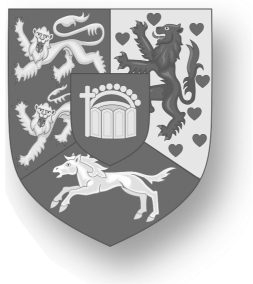
What, you may ask, is a German coat of arms doing in a history of cricket? Well, it’s a curious tale but one that bears telling. Hanover was the royal dynasty that ended with the death of Queen Victoria in 1901 and which included, nearly two centuries earlier, Frederick Louis, Prince of Wales.
Freddie was many things, a fop and a philanderer among them, but he was also a lover of cricket, and without his royal patronage the sport wouldn’t have gained such cachet among the English nobility of the eighteenth century.
Frederick was born in Hanover in 1707, the same year that in London the English capital stages its most illustrious cricket match to date, a clash between a London XI and a team of gentlemen from Croydon at Lamb’s Conduit Fields in Holborn.
As we saw in our last chapter, cricket had been brought to the capital on the back of the Restoration, and in the half-century following the succession of Charles II the game took a firm hold in the south-east of England.
There was still bear-baiting, cock-fighting and bare-knuckled boxing, but cricket offered the more discerning Englishman something a little less bloody. Patrons began cropping up, wealthy enthusiasts who used their money to spread further the appeal of cricket. Edward Stead was a prominent one in Kent, forming his own XI in the 1720s and challenging teams from London and Surrey. In 1728 his side took on the Duke of Richmond’s XI for a ‘large sum of money’, and a few months later Stead’s men defeated a Sussex team sponsored by Sir William Gage.
Gambling was at the heart of these matches, which is why the aristocracy were so attracted. Richmond wasn’t the only cricketing duke. There were Newcastle, Dorset and Bedford, the latter regularly staging matches at his sprawling estate at Woburn Park against sides that included an Earl of Sandwich XI.
But no earl or duke could match the passion of a prince for cricket. Quite why ‘Poor Fred’ developed such a love for the game is unknown. Originally he may have adopted the game as a means of proving his ‘Englishness’, conscious that a blue-blood from Hanover was always going to have a hard time winning over the locals. But Frederick clearly developed a genuine love for cricket and was a regular at Kennington and other grounds across the country from 1731 onwards.
It was said that after a match between Surrey and Middlesex in 1733 the prince was so impressed by the quality of cricket that he paid each player a guinea. Two years later he sponsored a Surrey XI against London in a match played at Moulsey Hurst, and then he began playing himself. The Duke of Marlborough’s XI was defeated by the prince and his men in 1737, HRH winning a ‘considerable sum’ in the process.
Though Frederick had a venomous relationship with his father, George II, he was on better terms with his younger brother, Prince William, Duke of Cumberland, himself a cricket lover when he wasn’t butchering Scots. The pair were present at the Artillery Ground in 1744 to see Kent play an All-England XI, a contest won eventually by Kent. It was hailed by the contemporary press as ‘the greatest cricket match ever known’, and the poet James Love dipped his quill in ink to mark the occasion, beginning:
Hail, cricket! Glorious, manly, British Game!
First of all Sports! Be first alike in Fame!
By the mid-eighteenth century cricket’s roots were thick, deep and growing, thanks to its aristocratic patrons. From Sussex to Kent to East Anglia, clubs were being founded, such as the one in Norwich, which advertised in the Norwich Mercury for ‘lovers of cricket’ to join.

Hail, cricket! Glorious, manly, British Game!
When Dr Johnson published A Dictionary of the English Language in 1755 he defined cricket as ‘a sport of which the contenders drive a ball with sticks in opposition to each other’. He would have known, having played the game while studying at Oxford in 1729.
By then, however, the Prince of Wales was dead. It was said he was injured by the ball during a game of cricket at his Buckinghamshire home in 1749. Two years later, while dancing at Leicester House, he collapsed and died from a burst abscess on the lung, some in the medical profession attributing the abscess to the blow from the cricket ball.
Killed by a cricket ball – it’s the way the prince would have wished to go.